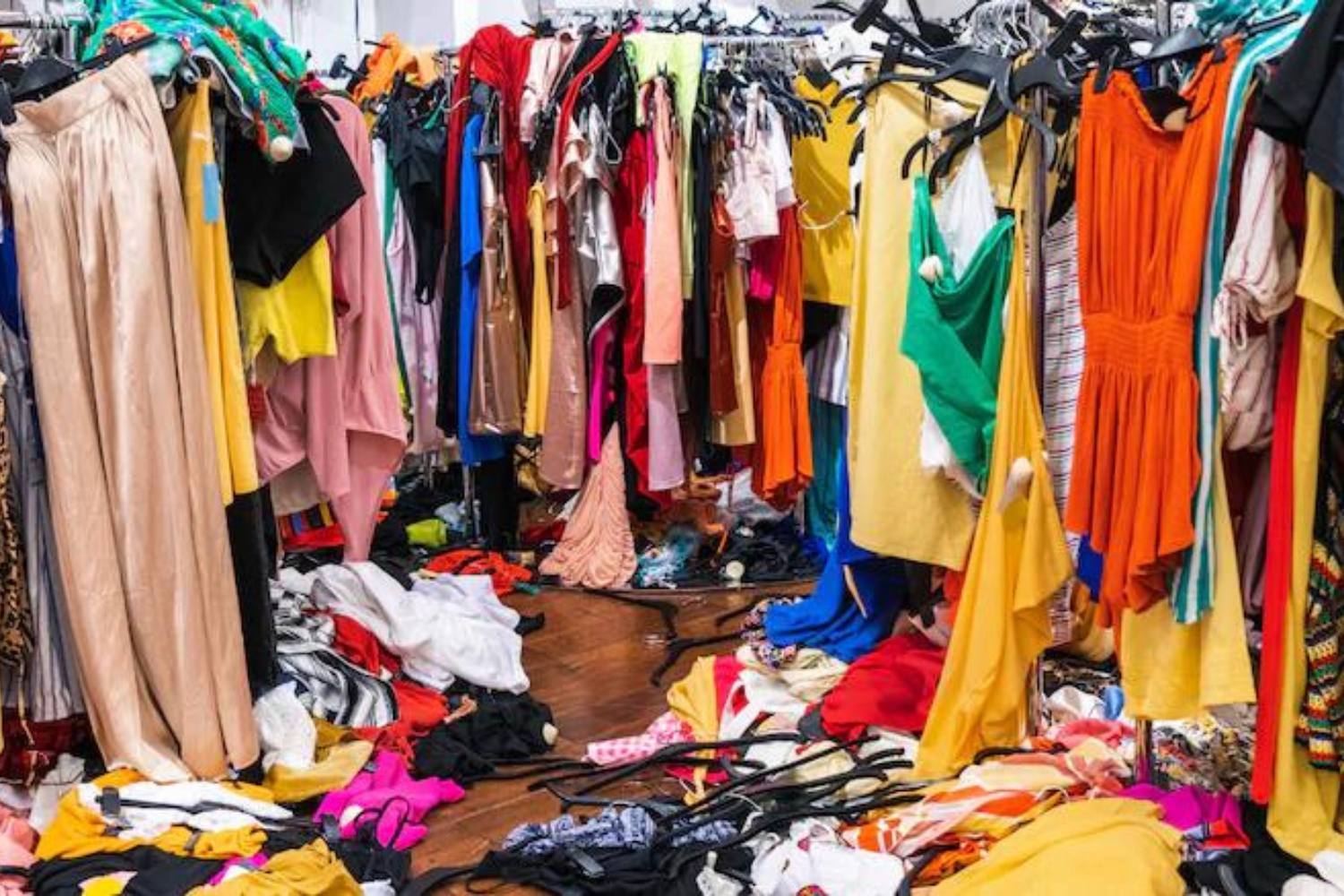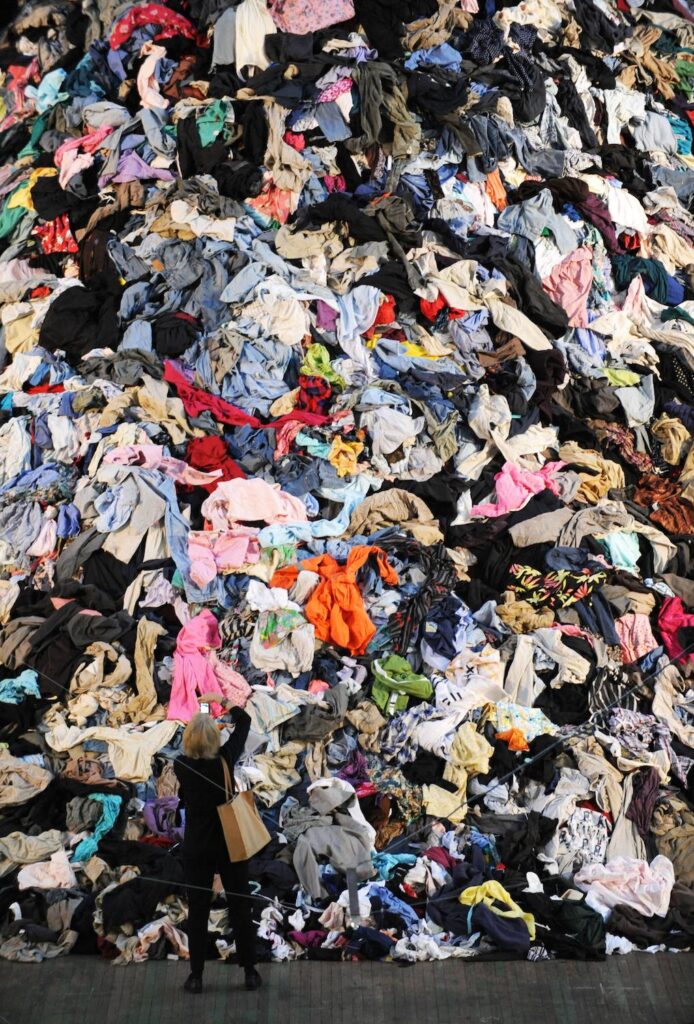
Ways to dress more sustainably in a world of fast fashion
We’re Gen X and we get it – we grew up in a world of Earth Day celebrations and cut our teeth on “We Are the World” sing-alongs. Now that we have adult paychecks and (supposedly) are the prime audience for fashion magazines, why can’t we buy clothing that’s both stylish and sustainable? Blame fast fashion.
“Fast fashion” is not just a rapid-fire response to online market trends, it’s a way that lots of clothing brands and stores get something that you swear you just saw on TikTok to their garment racks in a matter of weeks. It typically involves questionable overseas labor and definitely involves lots of carbon emissions from transportation. It usually also doesn’t last long, either by trend timeline or by quality standards.
A recent study by McKinsey notes that due to the demands of the fast fashion market, “from 2000 to 2014, clothing production doubled, and the number of garments purchased per capita increased by about 60 percent.” Why? Because the market is demanding it. McKinsey previously reported that 40% of U.S. consumers and 26% of those in the U.K. have shopped at fast fashion sites like Shein or Temu just in the past 12 months. While you may or may not have tried out these brands, you probably have shopped at brick-and-mortar mall stalwarts like H&M, Forever 21, and Zara.
Why is fast fashion worse for the environment than traditional clothing production? Well, depending on how your clothes are made and where, they might share some tragic similarities, like sweatshop overseas labor, and high-carbon footprint (either through materials or final product shipping), or waste. But what fast fashion truly excels at is the fact that most people don’t keep the clothing very long – throwing them away and creating massive problems in landfills (some reports note 66% of discarded clothing ends up here) or even on beaches choked with garment trash or in deserts that are more old tee shirts than sand.
In fact, “some estimates suggest that consumers treat the lowest-priced garments as nearly disposable, discarding them after only seven wears,” according to McKinsey. What that garbage does is harm not only ecosystems (from waste starting at its manufacture) but also choke landfills often located near poorer, BIPOC residents in U.S. municipalities, or in inefficient landfills abroad (mostly the “global South”) where they simply cannot process the influx.

What can I do to slow my fashion roll?
Nobody is saying you need to grow your own flax and weave a sack from it (well, maybe one person). But it is a good idea to maybe pause a minute when you wanna snag that cold-shoulder top for $8 on clearance.
6 steps to more sustainable clothing consumption
1. Pause before you buy
Instead of clicking the second a sale hits your inbox, take a step back and consider how and why you are thinking of purchasing the product. Is it the lure of the marketing and the promise of savings? Or do you need it?
2. Read the label
Look at where and by whom clothing is manufactured. Modern regulations require this. If you’re in a store, think about all that travel your shirt has already undergone just to get to your block.
3. Recognize the good (and bad)
Learn more about how good clothes are constructed and you’ll be able to spot stuff that will fall apart a mile away. Think about “building a wardrobe” not just “buying new clothes.” Look for staple pieces that will be timeless as well as look great on you. Maybe you loved your old ‘90s JCrew barn coat more than life itself – go look for it in vintage resellers or Etsy or eBay. Many brands we loved just aren’t making clothing the same in the 2020s like they did in the ‘70s, ‘80s, or ‘90s due to outsourcing, cutting back on quality materials, or simply that old chestnut of profit over product.
4. Shop sustainable brands
Do research into brands you love and definitely don’t take their word for their own good deeds. Greenwashing can happen everywhere. Certifications like Fair Trade or B Corps,, are OK, but remember that not everything carried by a brand is manufactured the same way, so it’s a real piece-by-piece project. Here’s a list of 15 clothing labels and 27 shoe brands to start.
5. Wear better materials
The label or product information can also tell you the makeup of the garment, including the materials used to make it. Natural fibers such as cotton, linen, and wool are easier on the planet than fossil-fuel-based fibers like polyester, nylon, and acrylic. Microplastics from these fibers often end up in oceans either through manufacturing or later as waste.
6. Upcycle, mend, and share
Instead of tossing a torn piece of clothing, repair it! Or when you’re done, share it with a clothing swap, a mutual aid org, or a local organization that doesn’t just bundle it off to overseas landfills (you’d be surprised where those donations get shipped off to).




